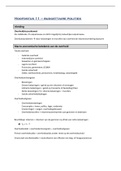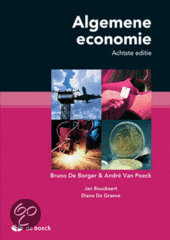Summary
Samenvatting Algemene economie - hoofdstuk 11
- Course
- Institution
- Book
Dit is een samenvatting van hoofdstuk 11 uit het boek Algemene economie - Bruno De Borger & André Van Poeck (10e druk). In het document zijn verduidelijkende grafieken weergegeven en belangrijke onderdelen aangeduid in kleur.
[Show more]





